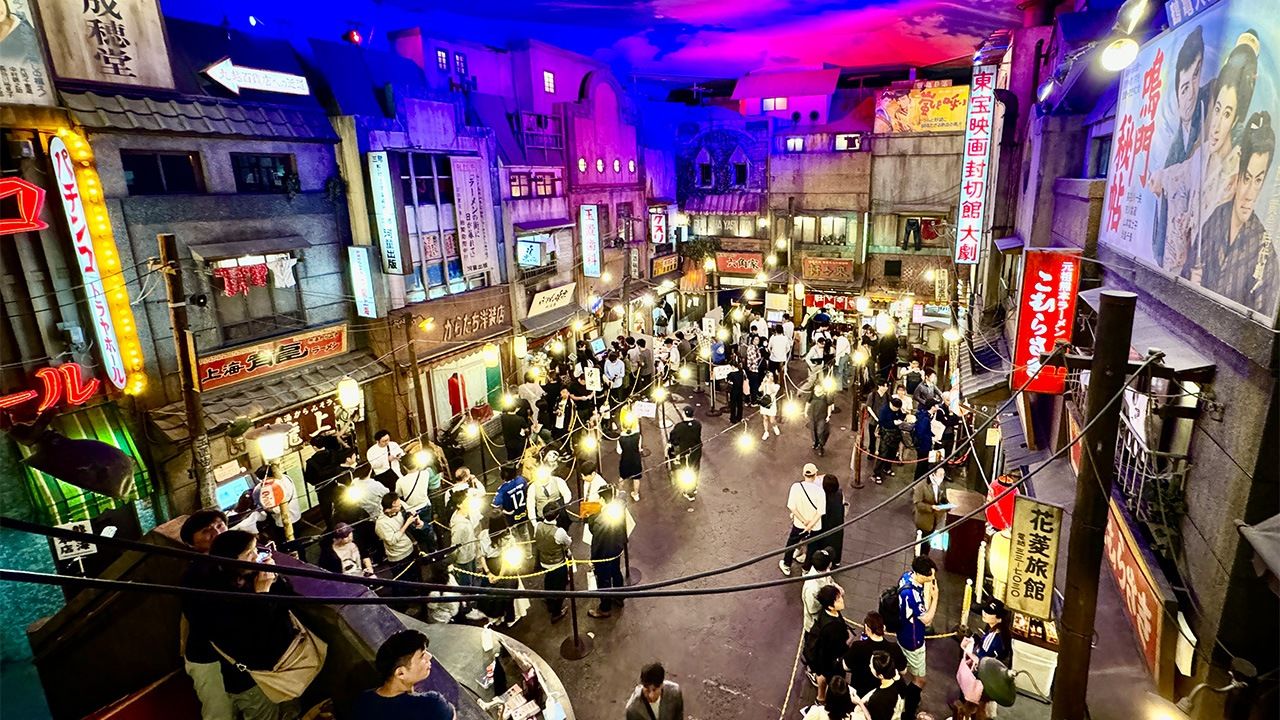
The Ever-Evolving Culture of Ramen
Japan’s Five Big “Ramen Alleys” Put Premium Bowls in Easy Reach
Food and Drink Guide to Japan- English
- 日本語
- 简体字
- 繁體字
- Français
- Español
- العربية
- Русский
The Tokyo metropolitan area is packed with famous ramen shops, enough to engender choice paralysis. If you find yourself at a loss when choosing a noodle, consider visiting one of Japan’s ramen yokochō (back alleys), where you can find a collection of famous flavors in easy reach of each other.
A ramen yokochō is almost like a noodle-themed park, where branches of popular shops from all over Japan gather so diners can choose what they want. Some people call them “ramen complexes” but I prefer the good old fashioned Japanese name, yokochō.
The Yokochō Pioneer: Shin-Yokohama Ramen Museum
We’ll start with the Shin-Yokohama Ramen Museum, which opened in 1994 as the world’s first food-themed amusement park. It was a pioneer in popularizing the ramen yokochō style of facility nationwide and remains highly popular to this day.
Not only is it lined with popular shops from all over Japan, but it also has moody cafes and old-fashioned sweets shops for a full-on retro Japan atmosphere. It is still packed with visitors on weekends and holidays. The nearest station, Shin-Yokohama, is just 25 minutes from Shibuya Station or 17 minutes from Tokyo Station by Shinkansen.
The noodle shops themselves rotate in and out regularly. As of July 2024, there are eight in business, including Ryūshanghai of Nan’yo, Yamagata Prefecture, with its miso ramen and Fukuoka’s popular Hakata Issō.
One must-visit shop at the Museum is the Rairaiken Fukkatsu Project, which seeks to recreate the original flavor of Asakusa Rairaiken, a legendary ramen shop founded in 1910. Rairaiken was the origin of Tokyo’s ramen business but closed in 1976. The project uses documentary evidence of the shop’s recipe for a modern re-creation and opened up in 2020. It is a place to experience the original shōyu (soy sauce) ramen flavor.
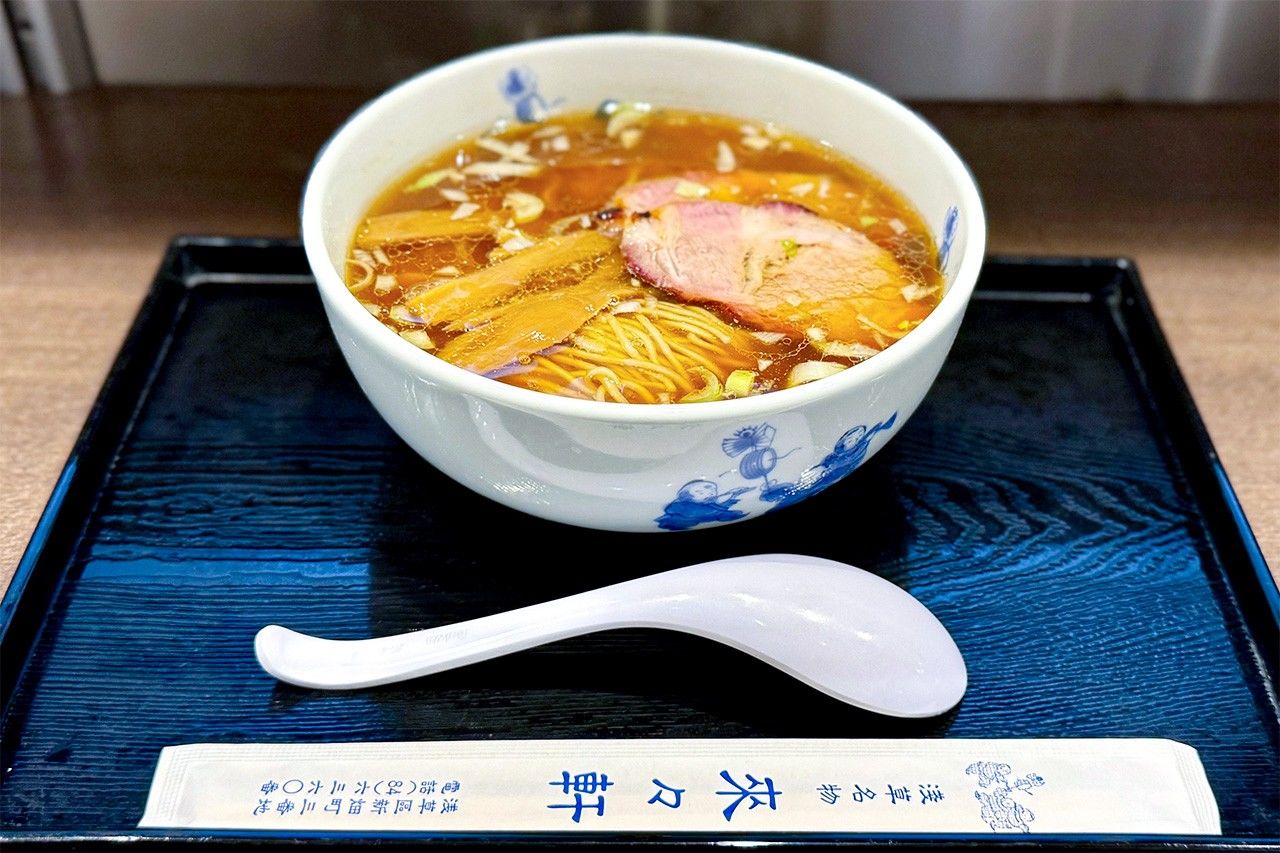
Ramen from Asakusa Rairaiken (¥980) inside the Shin-Yokohama Ramen Museum. (© Yamakawa Daisuke)
The broth is packed with flavor from domestic pork, chicken, and vegetables simmered over high heat with dried sardines. The noodles use Sato no Sora, a variety of wheat raised in Japan since the Meiji period (1868–1912), and are made using two versions of the shop’s original methods for a unique comparison opportunity. One uses bamboo logs to press out the noodles (limited to 100 bowls a day) and another uses a machine made in 1935 to roll them out.
The menma bamboo shoots are made from dried slices steeped in water for a week, then flavored. The char siu pork is marinated then flame roasted. The old-fashioned methods behind each element all take time and effort, so the bowls bringing them together are a must eat.
Noodles in the North
The original ramen yokochō, a backstreet lined with noodle shops, first appeared in 1951 in Sapporo’s red-light district of Susukino. It was called Kōraku Ramen Meitengai (Happy-Going Ramen Street) and became a local treasure for early morning bowls to cap off a night of drinking. In 1971 it moved and was reborn as Ganso Sapporo Ramen Yokochō (The Original Sapporo Ramen Alley), where there are now 17 shops in business.
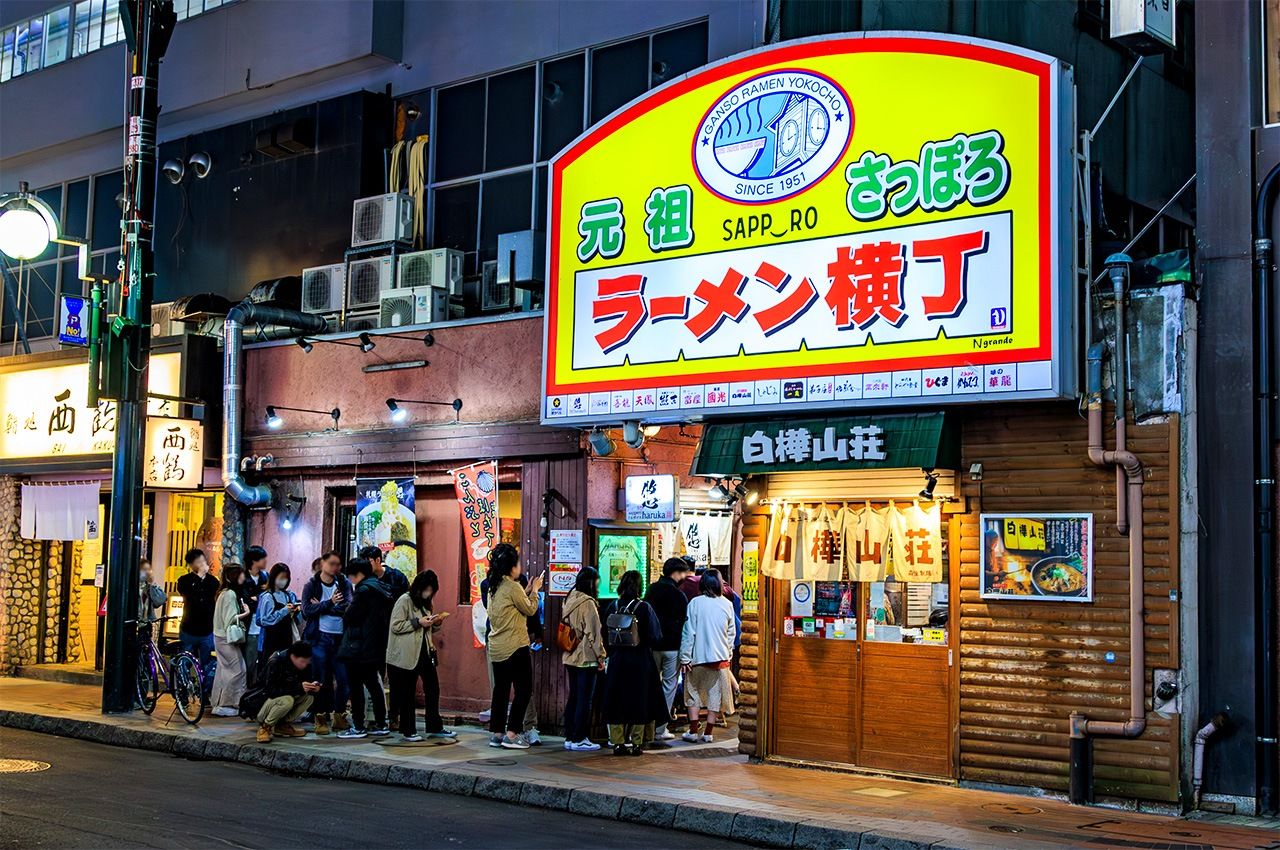
Outside Ganso Sapporo Ramen Yokochō. (© Pixta)
After the success of the ramen museum in Yokohama, similar styles of ramen yokochō began appearing all over Japan. Most, though, simply brought different ramen shops without a sound business plan, which made many end up going out of business. The result is, now only the “true” yokochō, approved by hardcore fans, survive.
Tokyo’s Ramen Kokugikan Mai
After the years of competition, Tokyo’s reigning king is Ramen Kokugikan Mai, in Aqua City Odaiba in Minato. Open since 2005, its Odaiba location has put it on the radar for countless overseas visitors. The terrace seating offers a view of the famous Rainbow Bridge to enjoy with over a bowl of ramen, making it perfect for sightseeing as well as dining.
As of July 2024, there are six shops inside, including Ganja, popular for its very thick noodles, and Teuchi Chūka Gyoku, offering fresh, handmade noodles.
The real draw is Sandaime Hakata Daruma. It carries the DNA of famed Hakata pork broth ramen shop Daruma, founded in 1963 in Fukuoka. For those unsure what to order, the limited Kiwami Ramen at Ramen Kokugikan Mai is a sure bet.
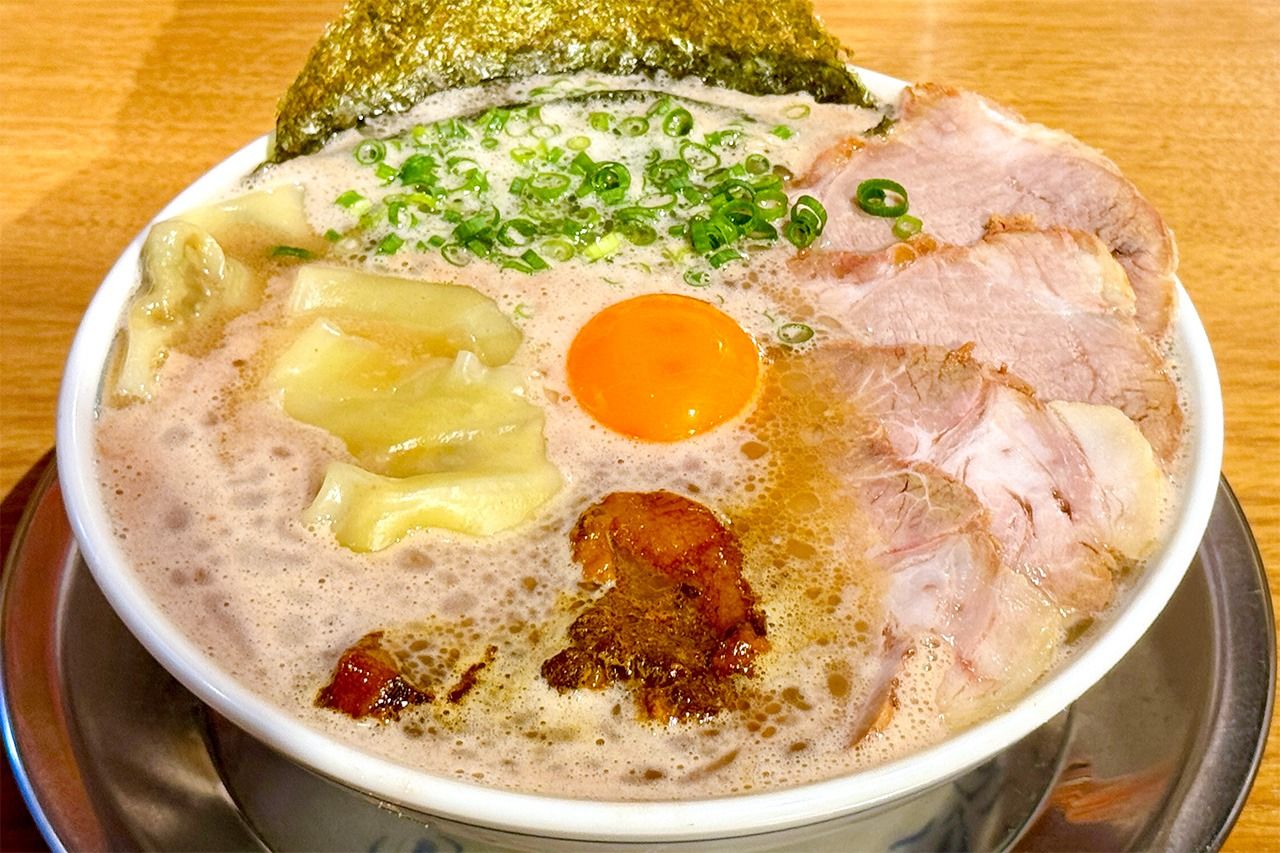
The Kiwami Ramen (¥1,530) available only at the Ramen Kokugikan Mai branch of Sandaime Hakata Daruma. (© Yamakawa Daisuke)
The bowls are filled to the brim with broth, based on the assumption of noodle seconds—known as kaedama—and are packed with flavor after 16 hours of slow-simmering pork bones in the broth. The super thin noodles hold lots of soup that is rich but not overwhelming. The bowl is topped with domestic pork loin char siu, stewed belly meat from Kyūshū-grown pigs, and the yolk from eggs laid in Kyūshū.
Be sure to try out the lunchtime only Hirugao, managed by the prime Tokyo salt-ramen shop Setagaya. The full menu includes dishes like Shio (salt) Tsukemen and Karami Paitan Shio Ramen, but the real draw is Tokusen Wagyu Char Siu Paitan Men, another dish only available at Ramen Kokugikan Mai.
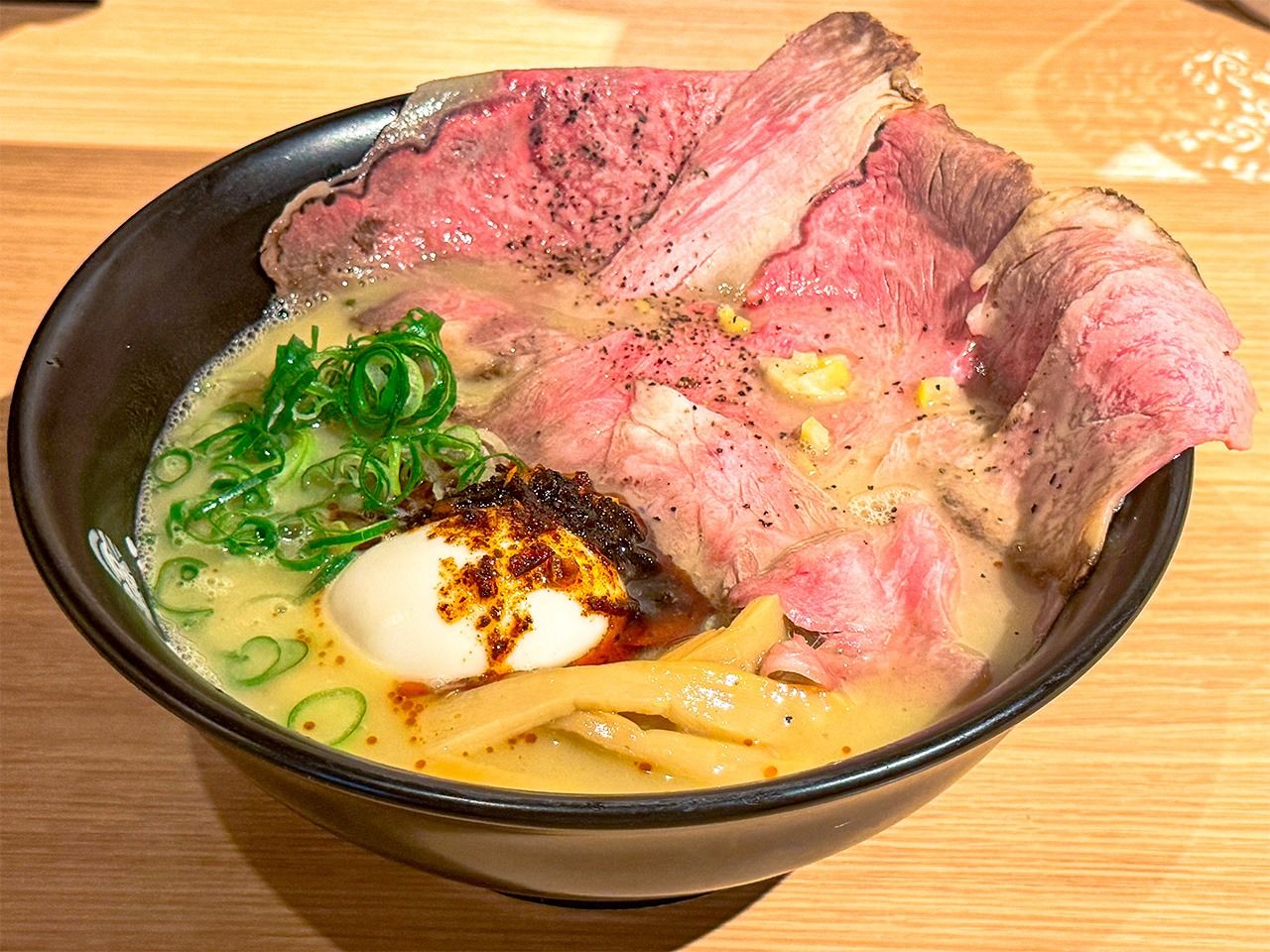
Tokusen Wagyū Char Siu Paitan Men (¥2,300) at Hirugao in Ramen Kokugikan Mai. (© Yamakawa Daisuke)
The marbled wagyū beef loin char siu slices overlap the bowl and are slow-cooked on low heat until they are ready to melt in the mouth. The paitan “white soup” is rich but smooth, packed with chicken flavor. Its extravagance makes the limited availability doubly tempting.
Tokyo Ramen Street at Tokyo Station
The final three of our five best ramen streets are all gathered around Tokyo Station. First up is Tokyo Ramen Street, part of First Avenue Tokyo Station. connected to the Yaesu Exit at Tokyo’s main Shinkansen terminal. The oldest shop opened back in 2009, and people still line up for piping-hot bowls.
As of July 2024, there are eight shops on Ramen Street, including the award-winning Ikaruga and a branch of Sora no Iro Nippon, which boasts a Michelin Guide mention at the main shop. The idea location tied to the main station means lines are common everywhere, but one of the most popular is Rokurinsha, which set off the nationwide boom in rich tsukemen dipping noodles.
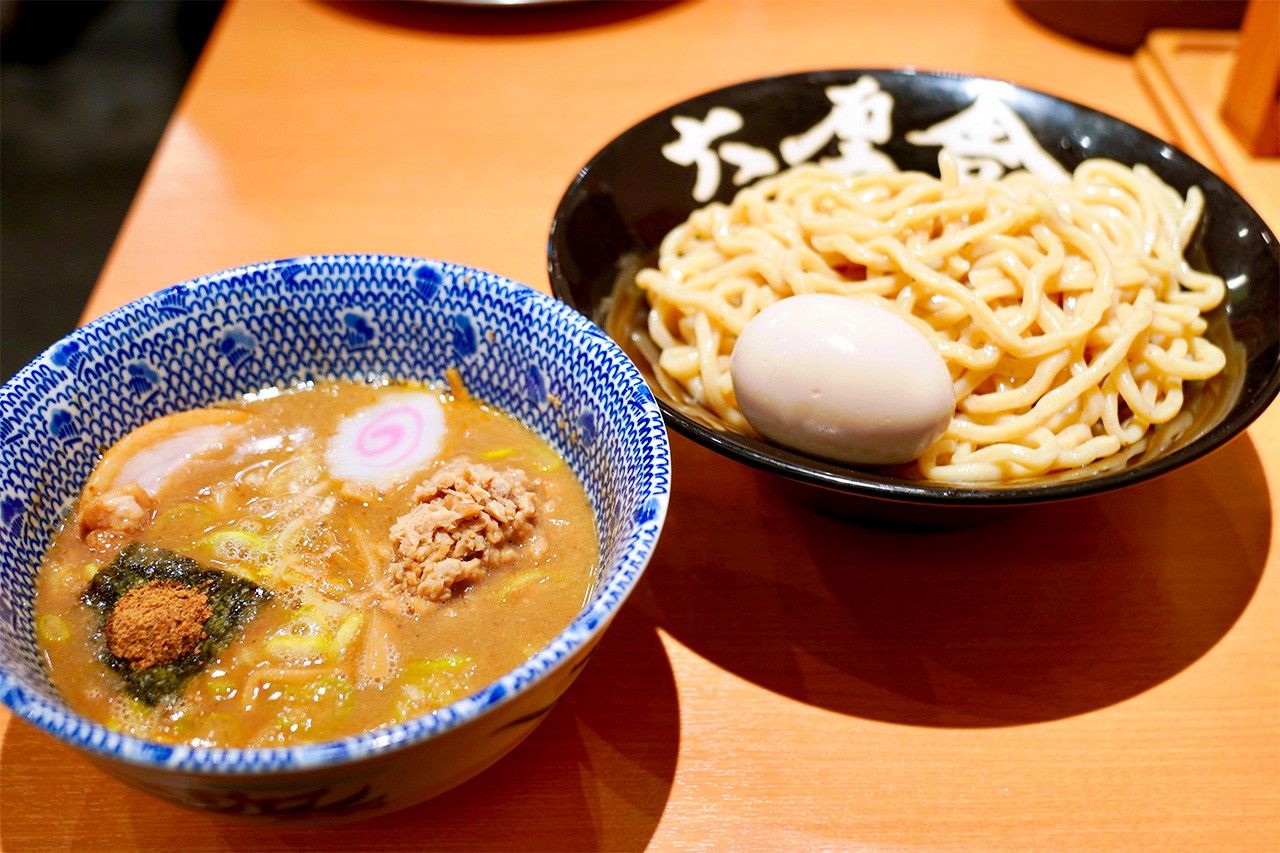
Rokurinsha’s Tokusen Tsukemen (regular size), ¥1,150, inside Tokyo Ramen Street. (© Yamakawa Daisuke)
The especially rich soup that has become synonymous with Rokurinsha is made from massive amounts of pork and chicken bones, seafood, and vegetables simmered together over long periods. The noodles are made especially for Rokurinsha at Tokyo’s leading noodle maker Asakusa Kaikarō for overwhelmingly firm chewiness and a natural, wheaty aroma. Combined with the thick dipping sauce, they offer up a powerful flavor sure to surprise.
A Battleground Filled with Famous Names
There is also a newcomer to the Tokyo Station area. In 2019, the commercial facility Kitte Marunouchi opened up with Ramen Gekisenku, or Ramen Battleground, in the basement.
As of July 2024, you can find five shops, including offerings from Tokyo’s miso ramen pioneer Do Miso and Kaneda, offering up Chūka Soba with help from a French chef. A particular draw is Matsudo Tomita Menban, the city’s first branch by Chiba Prefecture mainstay Tomita. The dish that put Tomita on the ramen map is the rich pork and seafood tsukemen, which stands out for its incredibly rich dipping sauce and aromatic house-made noodles. It’s a dish that will erase all doubt about its epithet, “Japan’s best tsukemen.” Access to all these famous noodles is truly one of the yokochō’s charms.
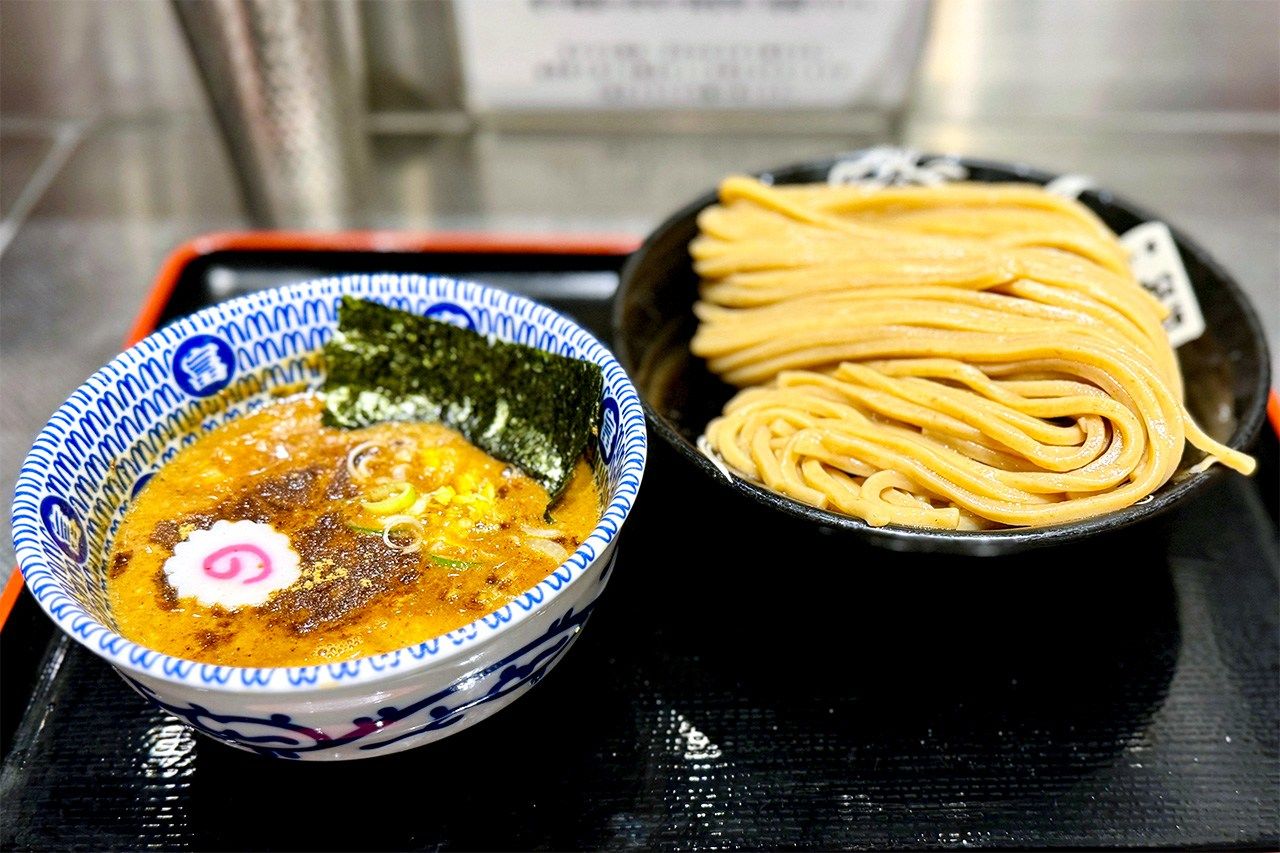
The Nōkō Tsukemen (¥1,000) at Matsudo Tomita Menban in Ramen Gekisenku. (© Yamakawa Daisuke)
Tokyo Ramen Yokochō Fills out Tokyo Station’s Ramen Wonderland
Tokyo Station’s third ramen street appeared in 2022, with the opening of Tokyo Ramen Yokochō in the area under the Yaesu exit. It has seven shops, including Ramen Butayama with its hearty bowls piled with vegetables and the ginger-soy sauce specialist Nagaoka Shokudō, one of Niigata’s Prefecture’s top five ramen outfits. The centerpiece, though, is Fūunji, a tsukemen specialist often ranked alongside Rokurinsha or Tomita.
The tsukemen trend now is seafood- and pork-based sauces, but Fūunji is drawing crowds with its intentionally unconventional chicken-based “white broth.” The tsukemen has become famous, but the shop’s actual ramen is also delicious. The cloudy broth is slow simmered to bring out plenty of chicken flavor, which is enhanced with dried sardines and katsuobushi bonito flakes. The result is a creamy broth paired perfectly with slick, chewy medium-thick noodles.
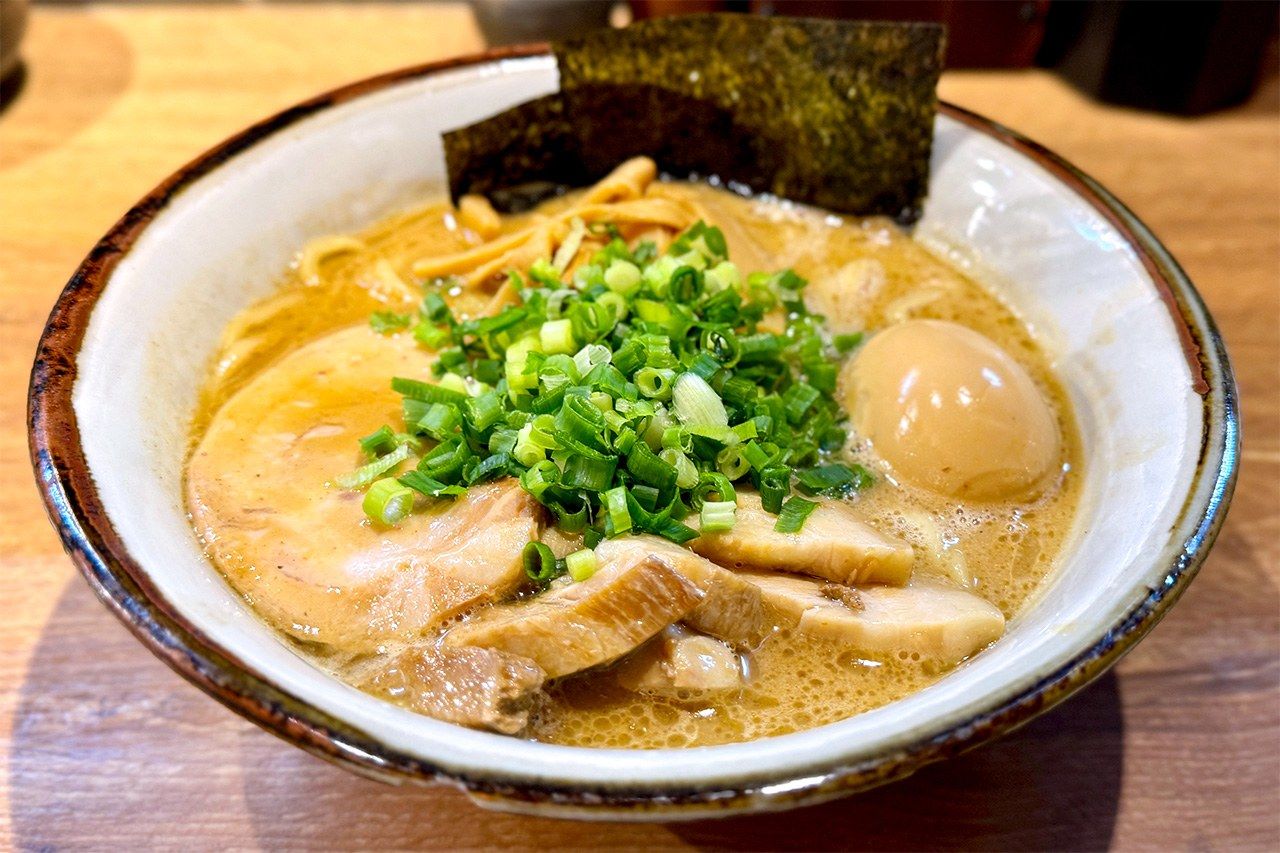
Fūunji’s Tokusei Ramen (¥1,150) at Tokyo Ramen Yokochō. (© Yamakawa Daisuke)
The five ramen yokochō introduced here keep drawing crowds because they guarantee good bowls. Many noodle hounds make a point of trying at least two after making the journey to visit. That calls for the ultimate ambition of the true ramen maniac, “ramen hopping” to keep up the chain of noodles, which was tailor-made for the yokochō layout. When planning your own ramen hop, aim to hit the first shop just after opening to ensure plenty of time. Get to slurping!
(Originally published in Japanese. Banner photo: Inside the nostalgic Shin-Yokohama Ramen Museum. The museum is just five minutes’ walk from Shin-Yokohama Station, and entry is ¥450 for adults. © Yamakawa Daisuke.)

